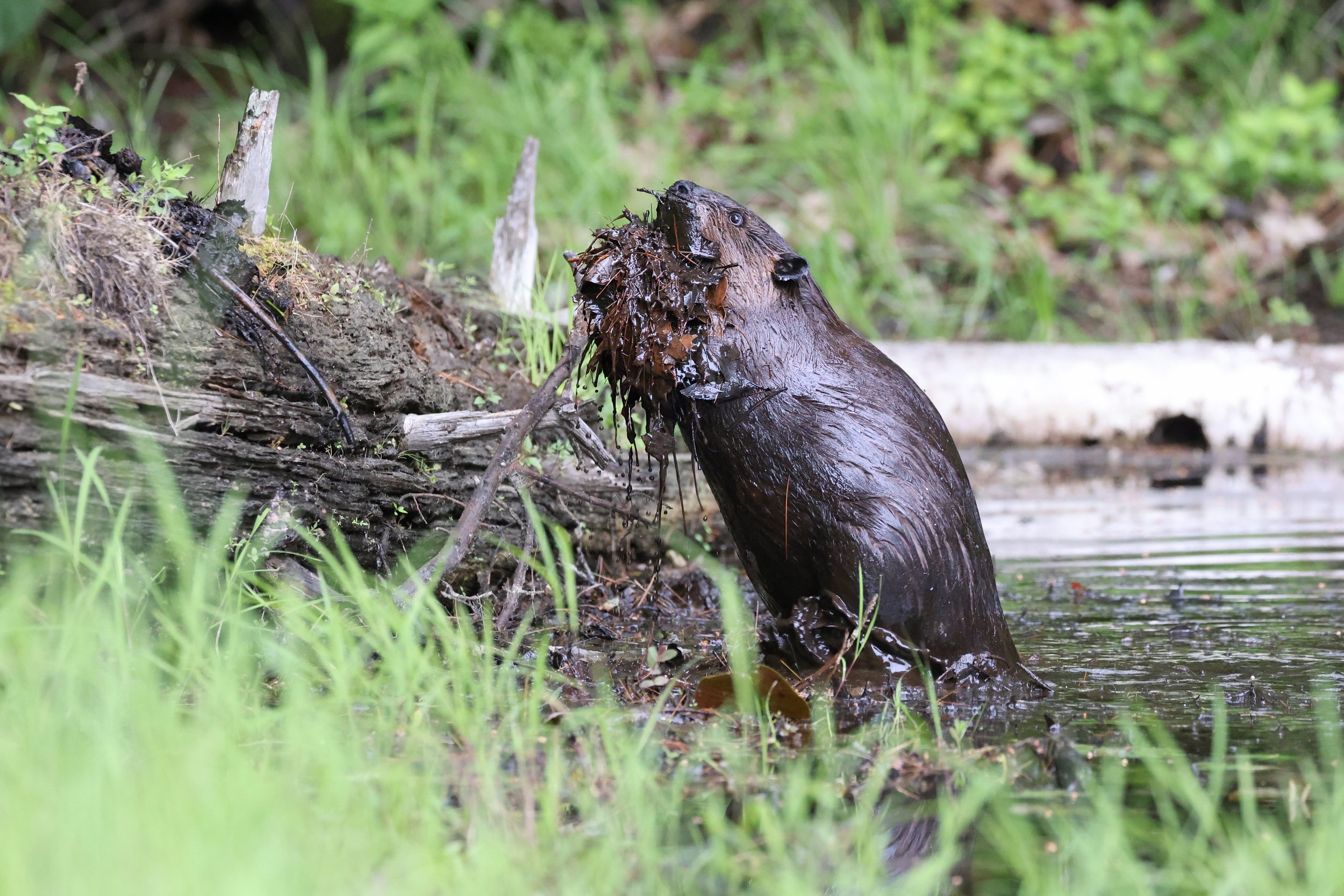
Get to Know Your Neighbors
Help Beavers Stay
Get to Know Your Neighbors
Beavers moving into an area is a sure sign that the health of the land is improving—and it’s about to level-up under their stewardship. As they settle in and establish a territory, you can expect more habitat complexity — including new wildlife and plants.
You may feel apprehensive towards the new residents, but they are not pests and tend to have predictable habits that are worth accommodating.
Beaver chewed sticks: Beavers are vegetarians. They chew down trees and eat the outer bark layers. The internal wood is then used for building. Most plants will be happy to have beavers around, but it is worth protecting any ornamental or fruit trees that you don’t want eaten.
Messy landscaping: Downed trees, submerged wood, and snags are all places where life thrives. Complexity creates the best habitats and beavers have been increasing complexity for millions of years. Many other animals and plants have come to rely on beaver landscaping techniques.
Water level changes: Beavers live in lodges, not dams. The increased water level created by the dam serves as their front door — keeping their lodge safe from predators.
How to handle neighborhood disputes?
Like with any neighbors, sometimes disagreements happen! Luckily there are many resources and options to help you coexist peacefully. Pond leveling and culvert protection systems can be installed to ensure water levels have a predictable upper limit. In addition, tree wrapping and crop protection fencing can be used to let beavers know which plants are off-limits. Coexistence solutions can offer easy and affordable compromises between human and beaver needs.

